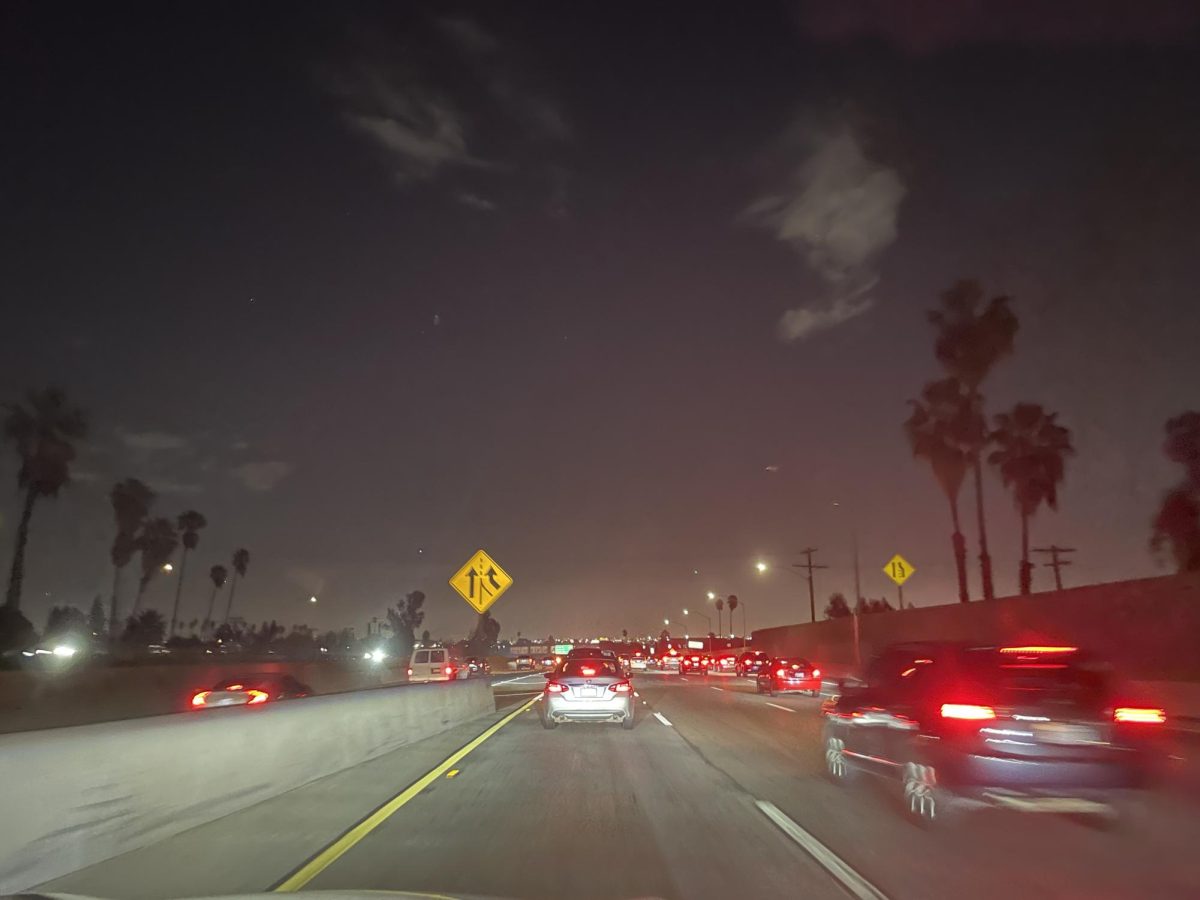Far above the Earth we inhabit lies an infinite abyss, scattered with universes undiscovered and galaxies unexplored. Through our night sky, we capture a fleeting glimpse of this world sublime, a window into the secrets hidden within the inky darkness of space. But from down below, peering up into this celestial looking glass, something seems amiss. As we gaze upwards, we can’t help but wonder –– where have all the stars gone?
For the past several decades, the visibility of stars in the night sky has slowly waned, a byproduct of the phenomena dubbed light pollution. Light pollution describes the artificial brightness of our night sky, caused by increased human lighting in particularly urban areas. With diminished contrast between light and dark, spatial features like stars become much harder to spot. A recent report shows that there is a 9.6 percent increase in sky brightness every year.
“When you have city artificial lighting in the area, it brightens the night sky, just like the sun brightens the sky and turns it into day,” astronomy teacher Dr. Eric Nelson said. “Same thing with city lights. So if you’re in somewhere like Los Angeles, you can see two or three of the brightest stars and you can see the moon and the planets and that’s about it. You’re not going to pick up anything else.”
In urban centers especially, the prevalence of artificial lighting like LEDs and advertisements washes away any stars in the night sky, drowned out by the brighter lights down below. Paired with environmental factors like cloud patterns and the time of year, light pollution can render certain areas void of any stars. Student astronomy researcher Kaitlyn Wang (12) emphasized the prevalence of light pollution in cities.
“It really depends on the type of day and the cloudiness,” Kaitlyn said. “Clear nights [are] getting more rare, and it’s really sad. The stars disappearing is an effect that happens around the cities because of the light pollution and clouds as well.”
Beyond just the visual impact of stars being erased from the night sky, light pollution also impacts the scientific community at large. For astronomers, the added light can disrupt finer instruments, preventing clear images of celestial bodies. Such a crucial part of their scientific process being hampered has resulted in a shift to viewing from more remote observatories and advanced telescopes, which are inaccessible to some astronomers.
“We just can’t see as deeply into the sky unless we get out of the atmosphere,” Dr. Nelson said. “A lot of ground based telescopes are becoming more and more handicapped, which means that their value gets reduced. And the science that comes out of them is thinning as a result. So it’s getting more and more difficult to actually do night sky observation.”
Even for non-astronomers, light pollution affects life as a whole. For humans, an increased amount of light at night can disrupt sleeping patterns, hindering the production of melatonin. For other species that rely on light, the influx of artificial brightness can also impact behavior and sleep.
“Light pollution causes a humongous amount of issues for some birds that are very sensitive to it and some animals that rely on day night cycles,” physical sciences club president Arnav Swaroop (12) said.
Certain sea turtle populations that rely on moonlight to guide their young have declined in recent years, with the light pollution caused by major coastal cities playing a huge factor. Other species that follow a nocturnal cycle are also affected, like seabirds and frogs, with increased lighting decreasing the contrast between night and day.
As cities expand and urban development takes on new heights, it may seem as if light pollution is an unsolvable problem. However, there’s also cause for hope. Unlike climate change and other environmental issues, light pollution has no permanent consequences. That is, if all human lights were to disappear, all would be resolved with no lasting side effects.
While light pollution remains a large-scale issue, there are many practical solutions that individuals can implement in their own lives, with the simplest being turning off lights when they’re not in-use. Additional steps include replacing LEDs with lights that do emit as much blue light, installing dimmers on light bulbs and closing blinds and windows at night to prevent excess light from going into the atmosphere.
“If you’re interested in not seeing an extinction event, then the impact goes up,” Dr. Nelson said. “The folks and creatures that are affected by light pollution can be affected dramatically. And just because it doesn’t impact you, doesn’t mean that it’s not something that needs to be considered as a serious long term problem.”


















![“[Building nerf blasters] became this outlet of creativity for me that hasn't been matched by anything else. The process [of] making a build complete to your desire is such a painstakingly difficult process, but I've had to learn from [the skills needed from] soldering to proper painting. There's so many different options for everything, if you think about it, it exists. The best part is [that] if it doesn't exist, you can build it yourself," Ishaan Parate said.](https://harkeraquila.com/wp-content/uploads/2022/08/DSC_8149-900x604.jpg)




![“When I came into high school, I was ready to be a follower. But DECA was a game changer for me. It helped me overcome my fear of public speaking, and it's played such a major role in who I've become today. To be able to successfully lead a chapter of 150 students, an officer team and be one of the upperclassmen I once really admired is something I'm [really] proud of,” Anvitha Tummala ('21) said.](https://harkeraquila.com/wp-content/uploads/2021/07/Screen-Shot-2021-07-25-at-9.50.05-AM-900x594.png)







![“I think getting up in the morning and having a sense of purpose [is exciting]. I think without a certain amount of drive, life is kind of obsolete and mundane, and I think having that every single day is what makes each day unique and kind of makes life exciting,” Neymika Jain (12) said.](https://harkeraquila.com/wp-content/uploads/2017/06/Screen-Shot-2017-06-03-at-4.54.16-PM.png)








![“My slogan is ‘slow feet, don’t eat, and I’m hungry.’ You need to run fast to get where you are–you aren't going to get those championships if you aren't fast,” Angel Cervantes (12) said. “I want to do well in school on my tests and in track and win championships for my team. I live by that, [and] I can do that anywhere: in the classroom or on the field.”](https://harkeraquila.com/wp-content/uploads/2018/06/DSC5146-900x601.jpg)
![“[Volleyball has] taught me how to fall correctly, and another thing it taught is that you don’t have to be the best at something to be good at it. If you just hit the ball in a smart way, then it still scores points and you’re good at it. You could be a background player and still make a much bigger impact on the team than you would think,” Anya Gert (’20) said.](https://harkeraquila.com/wp-content/uploads/2020/06/AnnaGert_JinTuan_HoHPhotoEdited-600x900.jpeg)

![“I'm not nearly there yet, but [my confidence has] definitely been getting better since I was pretty shy and timid coming into Harker my freshman year. I know that there's a lot of people that are really confident in what they do, and I really admire them. Everyone's so driven and that has really pushed me to kind of try to find my own place in high school and be more confident,” Alyssa Huang (’20) said.](https://harkeraquila.com/wp-content/uploads/2020/06/AlyssaHuang_EmilyChen_HoHPhoto-900x749.jpeg)







Katrina Mayfaire • Jun 14, 2025 at 8:33 pm
Yes You would think that you would than see many STARS during a blackout?
Nope.Yet I’m of the thought today at least that they haven’t made the stars map video that they play on clouds as well as small bits of stuff put up in the atmosphere to reflect whatever they wish to wow us with or cause wars and fear elsewhere .all horrible. Movies might be nice but I prefer the real stars .no one will remember them soon so then they will tell all what are stars …even if they’re no longer.
Scooby • Feb 15, 2025 at 5:15 am
My wife goes out of town with her BFF a lot, to relax in small cities dotted around AZ. Even in these small towns at high elevations she only ever sees the usual suspects (constatation stars).
Aside from this, I grew up in LA in the 80’s where there was just as much “light pollution” then as there is in PHX, AZ now and I could see the stars just fine back then. I literally watched them all disappear in the last 10 years.
Your light pollution excuse is tired, all used up and bs.